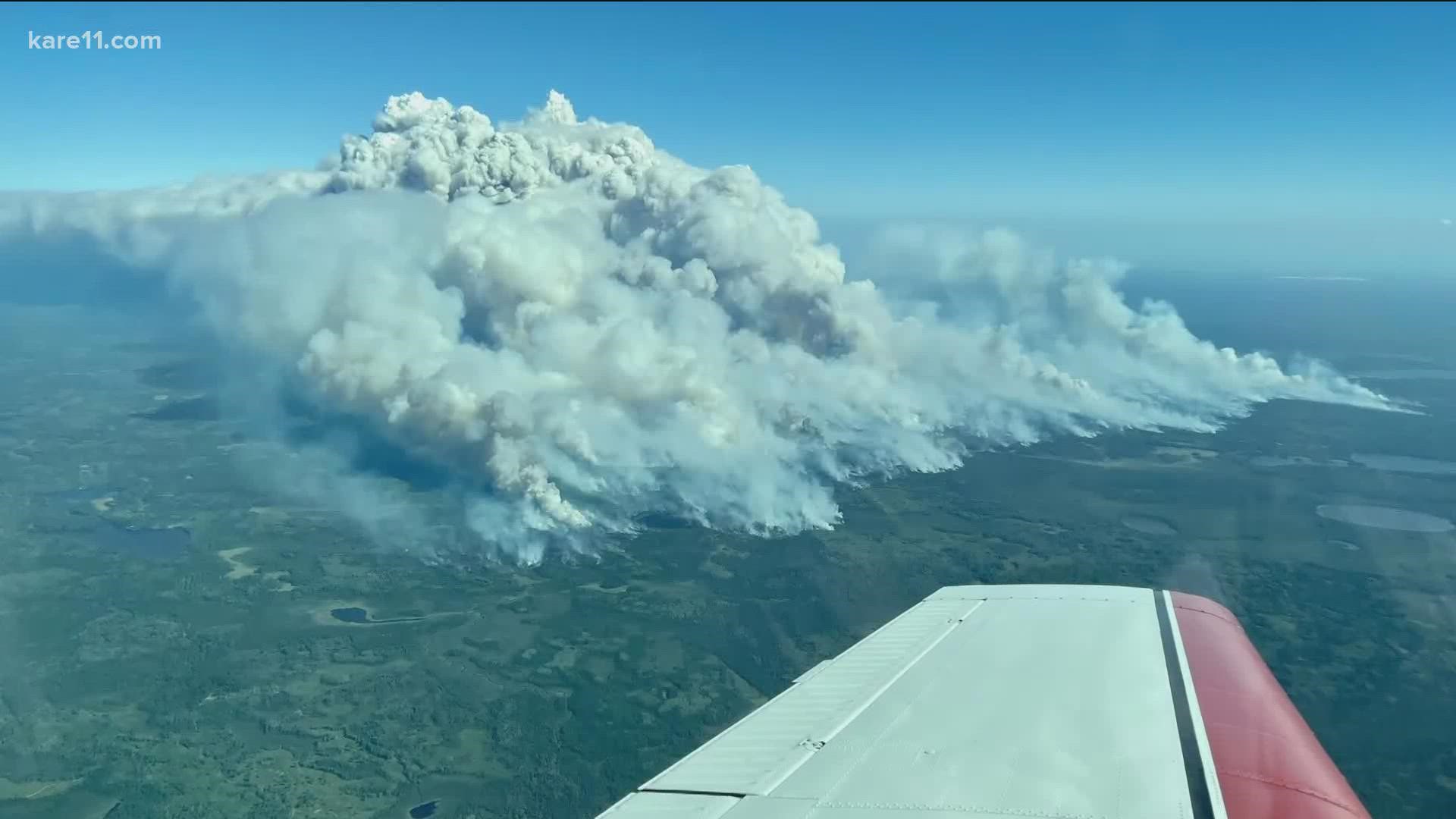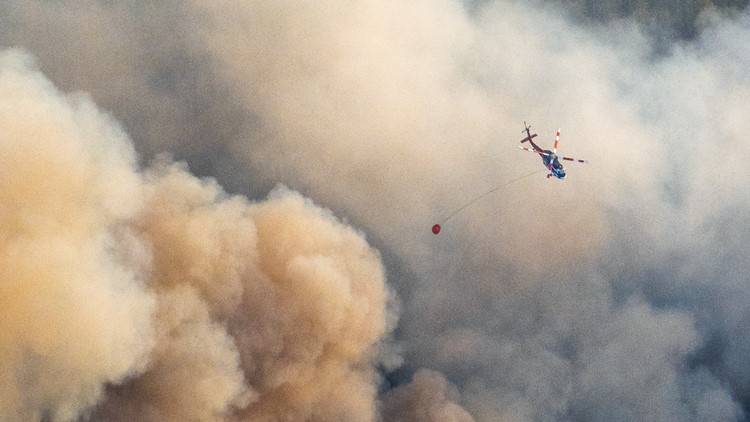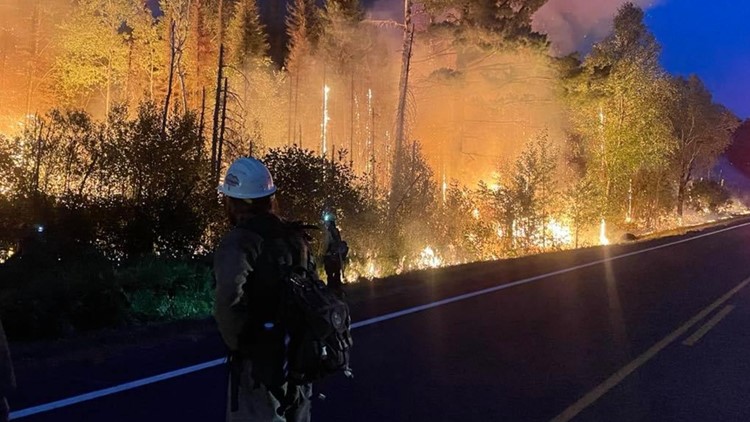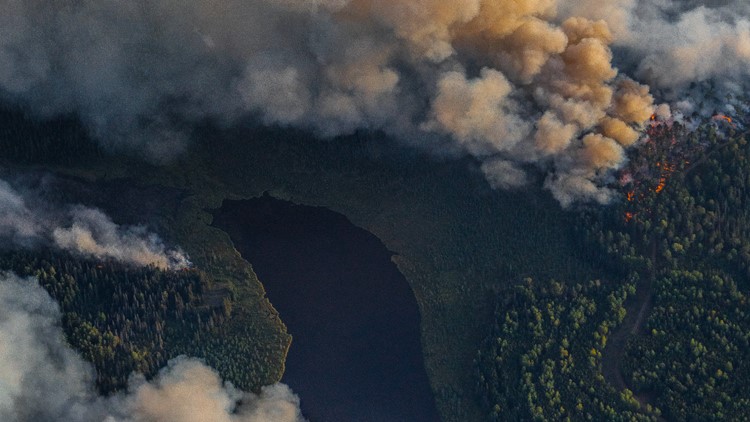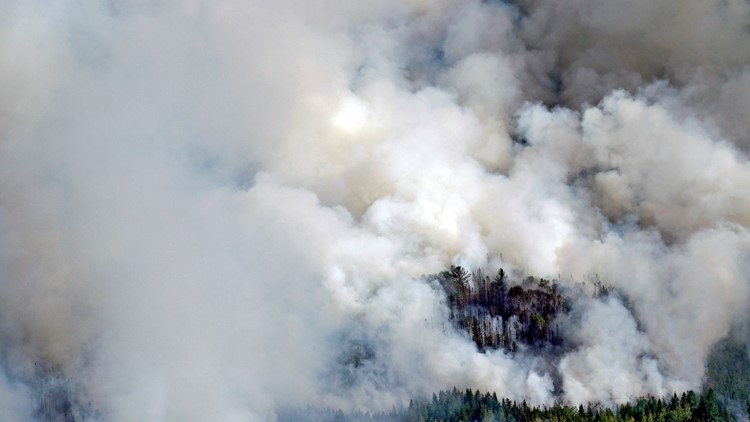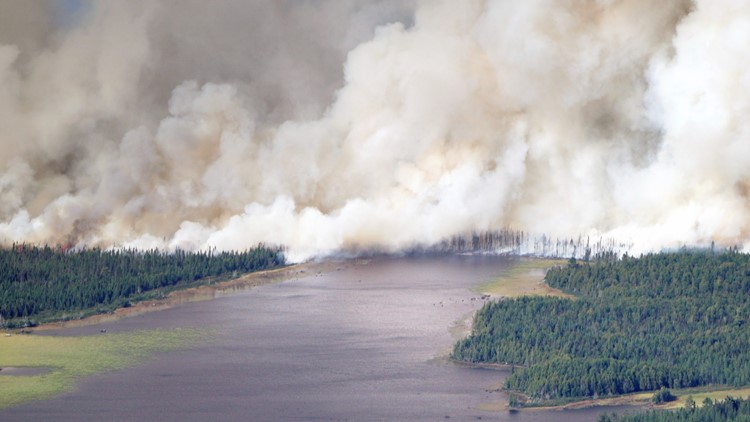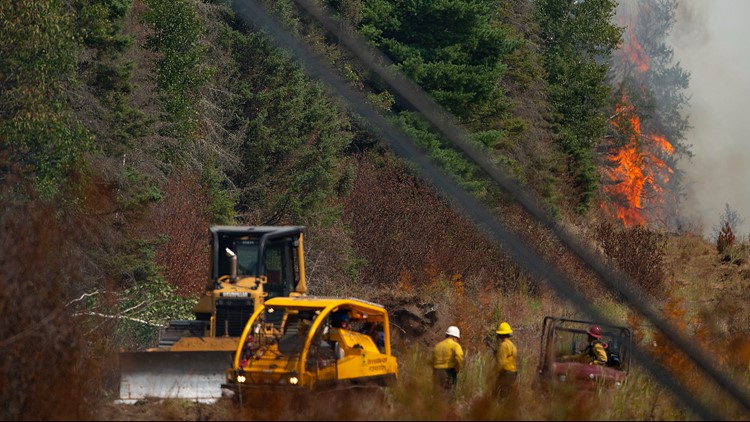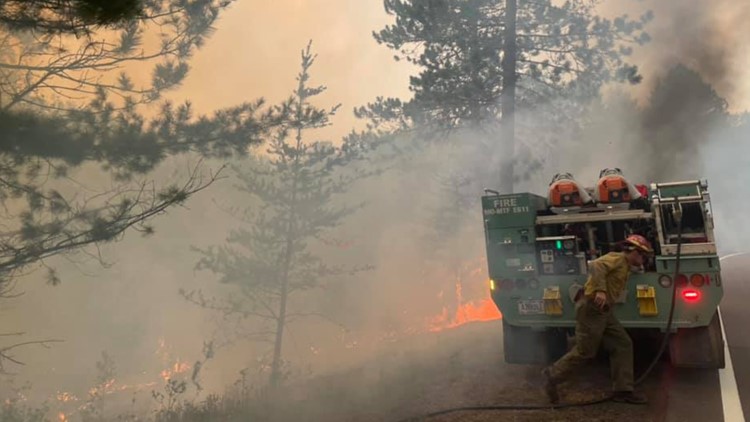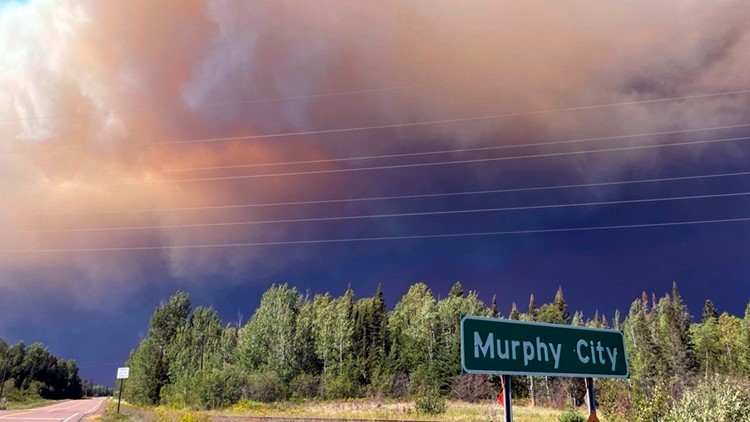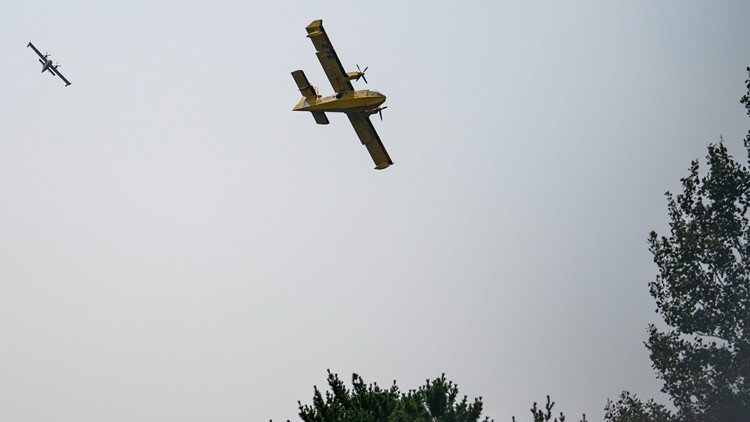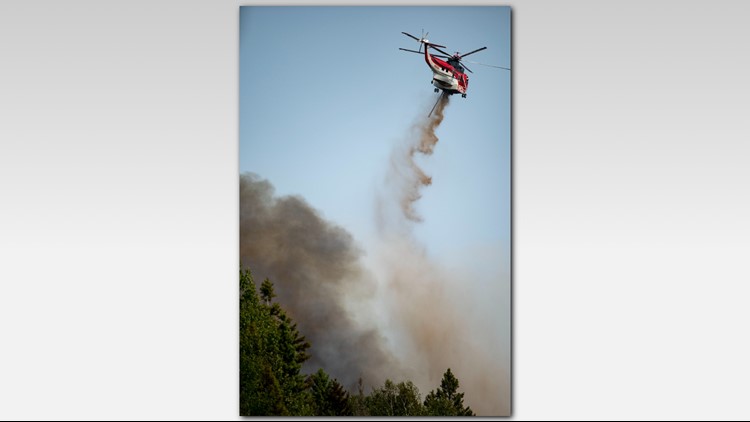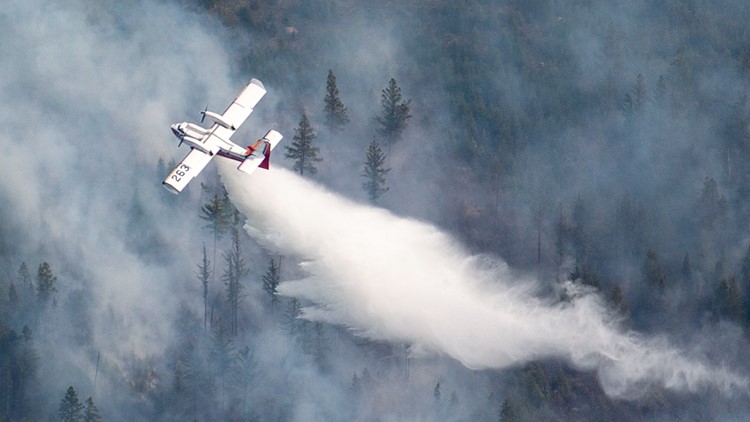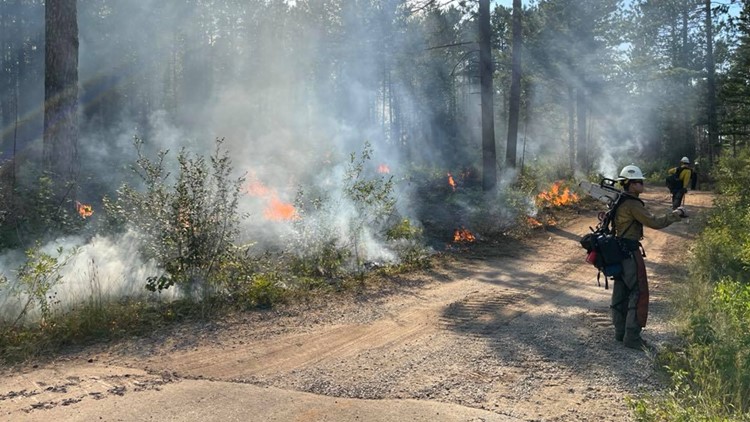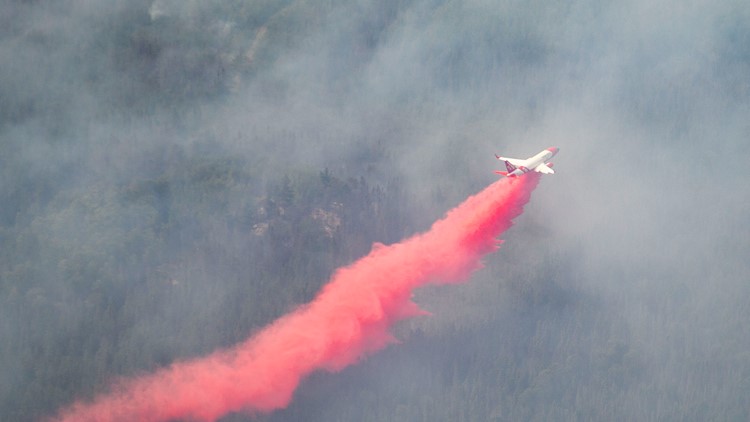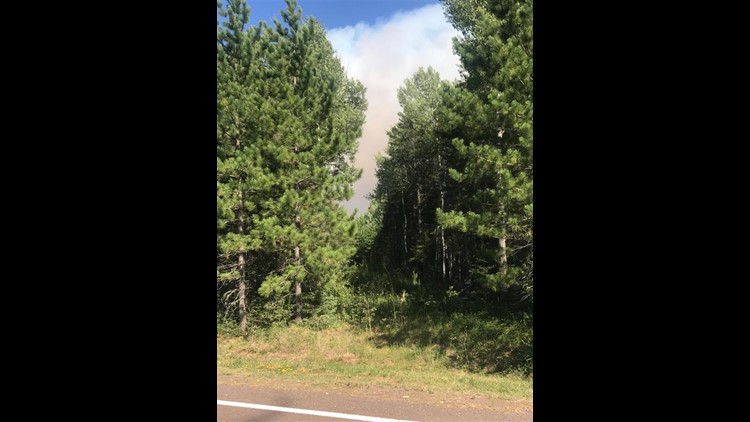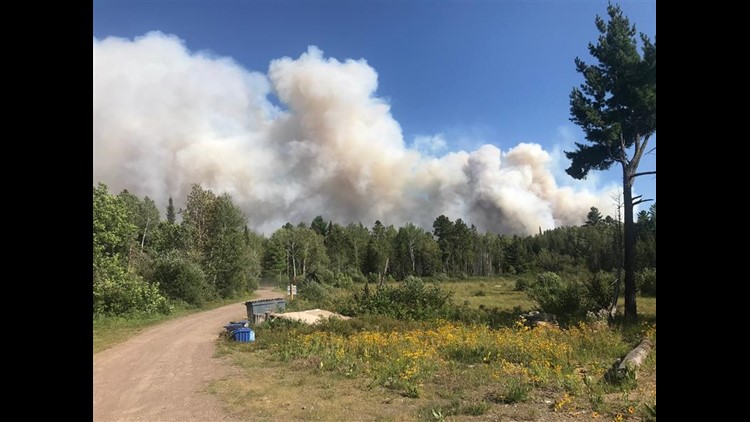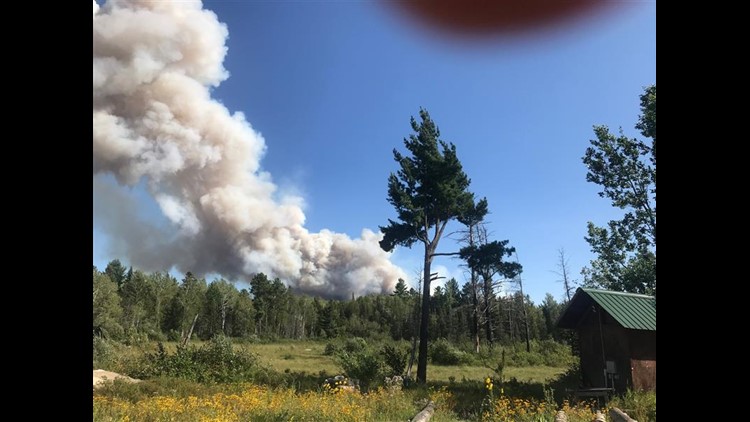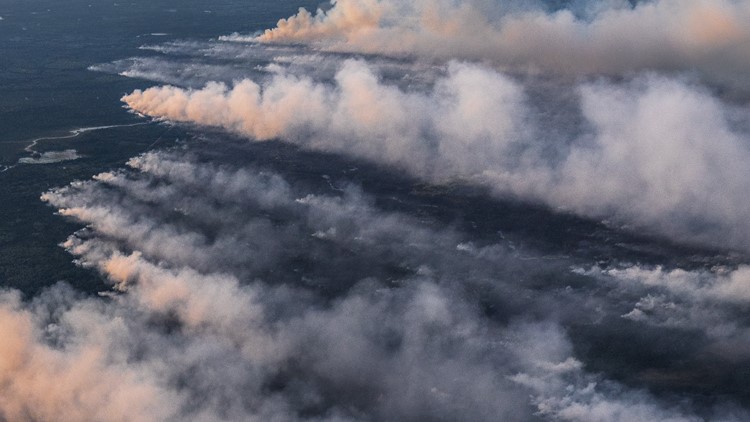ISABELLA, Minn. — Adverse weather conditions over the weekend have pushed the Greenwood Fire in northeastern Minnesota to double in size, and move towards areas that are more populated with people and structures.
A spokesman for the U.S. Forest Service (USFS) - Superior National Forest says the Greenwood wildfire has now spread out over nearly 21,720 acres as of 9 a.m. Wednesday, and remains zero percent contained.
On Sunday the fire was reported as just under 9,000 acres in size.
Fire officials say flames "made a run" early Monday afternoon, fueled by high winds and tinder-dry conditions, and were so pervasive they created their own clouds and a storm of sorts that launched "fire-created lightning." The resulting clouds and smoke were visible as far away as Lutsen. The behavior of the fire was so extreme that air resources, heavy equipment operators and hand crews working the fire had to be pulled out for their own safety.
Smoke from the wildfire has increased at a dramatic rate, resulting in an air quality alert effective until 3 p.m. Wednesday for St. Louis, Carleton, Cook and Lake Counties. The affected area includes Duluth, Cloquet, Hibbing, Ely, Virginia, Hoyt Lakes, Babbitt, Isabella, Two Harbors, Silver Bay, Grand Marais and the tribal nations of Grand Portage and Fond du Lac.
The growth of the fire and a shift in wind direction has made things more precarious in areas populated by more people and structures. A post on the USFS Facebook page Tuesday morning says the advancing flames forced fire and building protection crews stationed near McDougal Lake to retreat to areas of safety.
At this time 280 homes, cabins or businesses have been evacuated, 159 of them Monday alone.
Minneapolis resident Dr. Patrick Prochaska shared surveillance video from his cabin property near McDougal Lake with KBJR television. A camera captured the rapidly advancing flames as they tore through his land. Amazingly, Prochaska says the vinyl siding on the structure melted, but the cabin is still standing. He attributes it to a significant amount of work done taking down dead trees and establishing a fire line of sorts, removing fuel sources that would lead flames to the structure.
"It's sad," Prochaska said. "It really is. But I was a life science major before I became a doctor and I know that this is going to create this boom of new growth of things after the fire is done and with all of this sun coming in on that forest floor, it's going to be a whole different place. So I've kind of had to resign myself to that."
Prochaska says he bought the land 20 years ago and built the cabin in 2012. He's not sure when it will be safe enough to check on his property.
"The beautiful old trees that we had, I don't know how many of them are still around and we had some pretty old trees on that property," he said.
Greenwood Fire incident spokesman Clarke McCreedy tells KARE 11 fire crews are on the ground Tuesday cutting their way through dense forest land in an attempt to reach the area near McDougal Lake and provide access to Lake County sheriff's and emergency management officials. Their progress is being slowed by trees that have fallen, and many that are compromised and will soon fall. McCready says it will be some time before they have an accurate assessment of whether structures have been lost, and if so, how many.
Plumes of smoke from the fire are so thick that authorities cannot determine from the air whether any structures near McDougal and Sand Lakes have burned. A Temporary Flight Restriction for aircraft is in place over the fire area.
There is a small bit of good news Tueday. Weather and firefighting conditions are described as "much quieter," allowing hand and heavy equipment crews to attack the wildfire from all sides.
New evacuations were initiated Monday in areas from Deep Lake Road to Little Isabella Road, including those living near Mitiwan, Grouse and Kitigan Lakes.
During a briefing Monday night, Lake County Sheriff Carey Johnson said 159 additional residences have been evacuated -- including one resort near Highway 1 that was rushed off the phone during a call with KARE 11.
The Eastern Area Incident Management team said 426 firefighters are on the ground battling the Greenwood Fire as of Monday. They faced significant challenges on Monday due to heat, lower humidity, and gusty winds.
"We have incredibly dry fuels in the woods," said spokesman Jerritt Johnston. "This is historic drought."
There are two other major fires -- albeit much smaller -- raging within the actual Boundary Waters Canoe Area Wilderness, known as the John Ek and Whelp fires. They are both located near the county line of Lake and Cook counties.
Late Monday residents of the Gunflint Trail located from end of the trail towards the South end of Loon Lake were notified they are now on pre-evacuation status. While they are not ordered to evacuated at this time, residents are advised to:
- Turn on sprinklers
- Pack medications
- Gather pets
- Pack up valuables
The growth of the fires, especially the John Ek fire, moved the USFS to close the Boundary Waters Canoe Area Wilderness until at least Friday. The closure includes all lands, waters, trails, portages, campsites, canoe routes and entry points. All BWCA entry permits through this Friday have been canceled, and rangers are paddling to campsites telling visitors to leave.
The John Ek fire, 2.5 miles south of Little Saganaga Lake, doubled in size to 1,500 acres by Monday afternoon.
Clare Shirley, owner of Sawbill Canoe Outfitters north of Tofte and just four miles from the Whelp fire, said she's only noticed occasional smoke and haze in the air from her vantage point. However, with the closure of the BWCA, her parking lot is empty and canoes remain untouched.
"It is weird," she said. "We've been trying to get a hold of our customers. Primarily, we wanted to get in contact with people that were on their way up here. We had people from Ohio trying to get up here."

